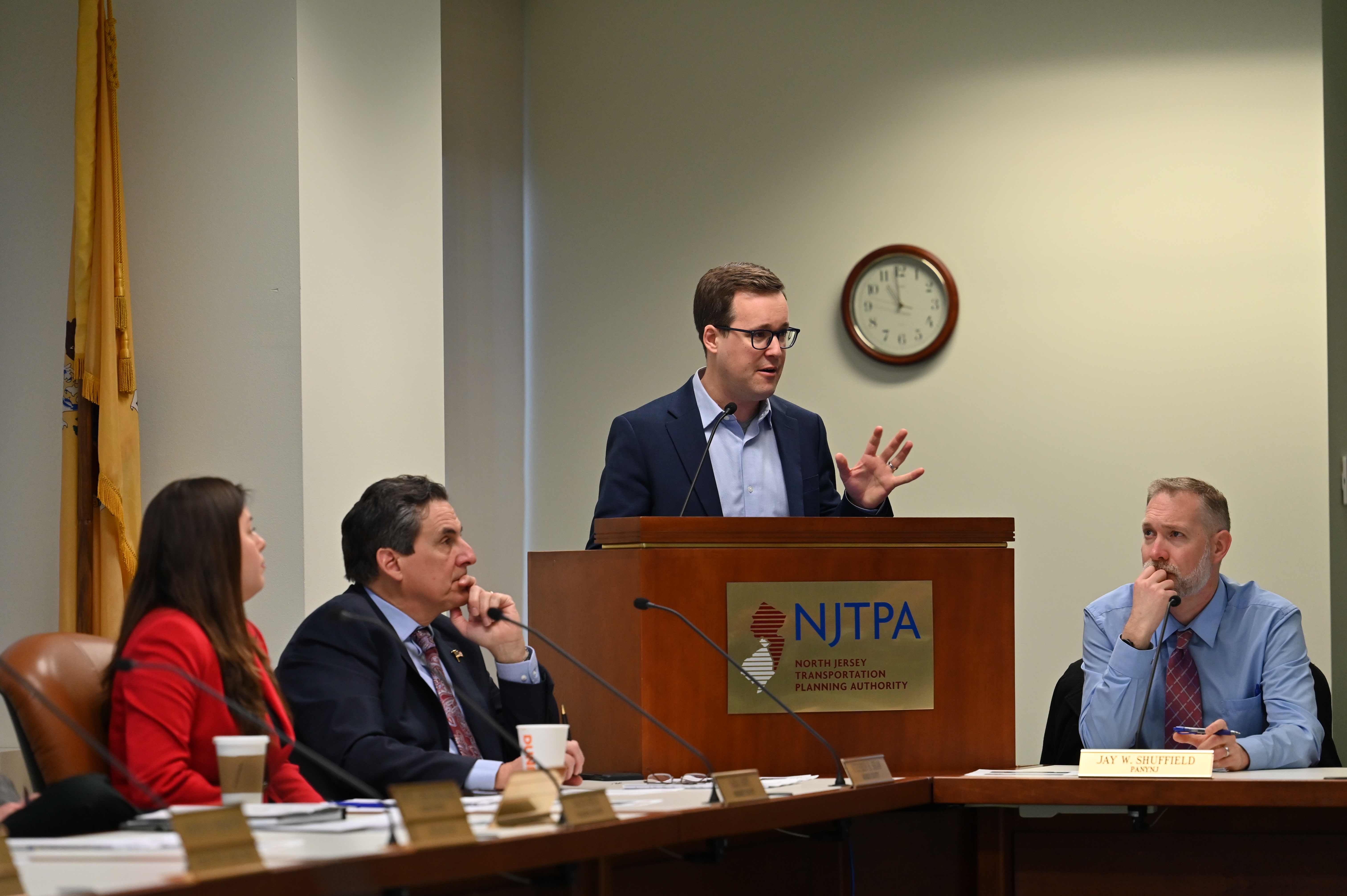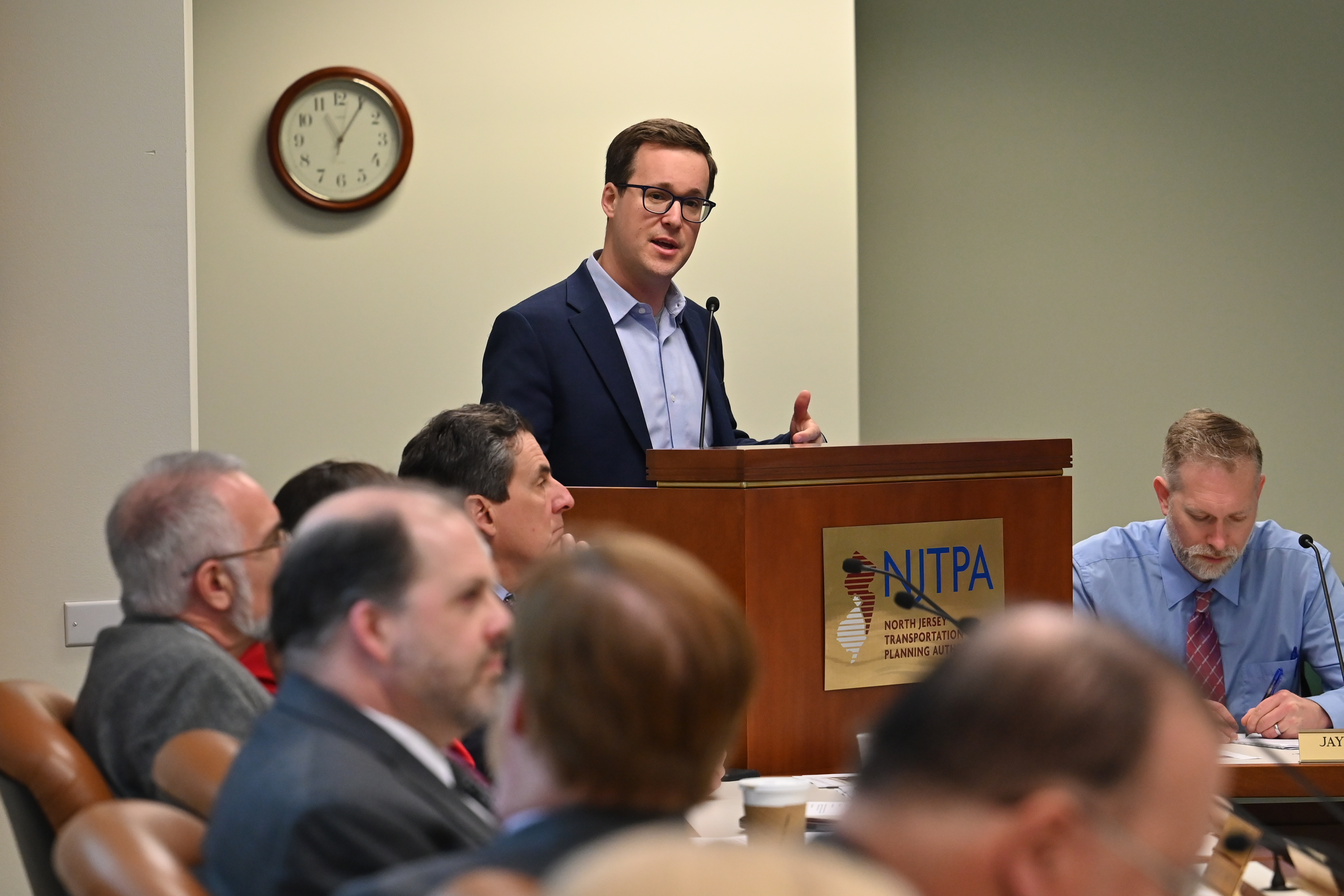The first rule of holes is when you find yourself in one, stop digging. That’s the challenge when it comes to reducing carbon emissions in the United States as laid out by Jesse Jenkins during a 30-minute presentation, “Pathways to Zero: Decarbonizing the Transportation Sector,” at the NJTPA Board of Trustees meeting on March 13, 2023.

Net zero carbon emissions in the United States is the point “where we stop digging ourselves a deeper hole when it comes to the challenges and damages and impacts of a changing climate,” he said.
An assistant professor of Mechanical and Aerospace Engineering at the
Andlinger Center for Energy and the Environment at Princeton University, Jenkins outlined the progress and challenges of the U.S. goals of reducing emissions by half by 2030 and reaching zero by 2050.
Since carbon emissions in the U.S. peaked at 6.6 billion metric tons from 2005 to 2007, there’s been a decline of about 1 billion tons. But the pace of carbon reductions each year must triple from the 2 percent realized on average over the last decade to 6 percent to get to the 2050 goal.
“The challenge is to go faster, faster, faster. And that requires foresight, public policy and investment, and significant efforts to overcome coordination challenges so that we can move faster collectively,” Jenkins said.
The electricity sector is really the linchpin, according to Jenkins. The U.S. must double the current amount of carbon-free electricity generated, building upon the growing contributions from wind and solar power.
The Inflation Reduction Act (IRA) will help do that, closing between half to two-thirds of the 1.5-billion ton gap between the current pace of carbon reduction and what is needed to roll back emissions to half of those in 2005 by 2030. Both through subsidies and driving clean energy costs down over time, the law will “make it easier and cheaper for households and businesses across the country to pick the clean option over the dirty option” according to Jenkins.
The academic REPEAT consortium, which Jenkins leads, estimates that the law will enable the U.S. to reach about 42 percent by 2030, shy of the 50 percent goal but a substantial reduction.

But he said that estimate only accounts for the direct effect of the law. He said the law could also accelerate the rate of reductions, as states, cities, and companies increase their “climate ambition” in response to the reduced cost of clean energy and other climate options. This is already being seen in New Jersey. Gov. Phil Murphy announced moving the target for 100-percent carbon-free electricity from 2050 to 2035 to take advantage of all the new affordable options created by the law.
In addition to a $7,500 tax credit for a new electric vehicle (EV),
there’s a $4,000 tax credit for the purchase of used EVs, which is important because most Americans don’t ever buy or lease a new vehicle, Jenkins said. There also are
various incentives for installing charging stations and purchasing charging equipment and for purchase of clean light, medium and heavy duty vehicles used by businesses and local governments.
With
subsidies in the IRA, purchasing an EV he said is becoming “a no-brainer for households.” About 5 percent of all vehicles were EVs in 2021 and that grew to about 8 percent in 2022. A similar 60-percent expansion is expected in 2023. Continued growth at that pace could achieve the goal of 100 percent of new vehicles being electric well before the 2035 targets set by New Jersey and other states, he said.
To prepare for this growing demand, Jenkins said, the U.S. must make investments in the electric grid and other infrastructure not seen in decades. But he said strains on the grid could be lessened if consumers and households were given incentives for efficient charging practices, including charging at night and less frequently. He noted that using a Level 2 home charger has the energy demand of plugging in 12 window-mounted air conditioners.
For the first time in history, he said the IRA has aligned the full financial might of the federal government behind clean energy transition. The challenge he said is “how fast can we scale up all of our efforts; how fast can we move to take advantage of the opportunities.”
A recording of the
presentation from the March 13, 2023 Board meeting is available here. The
slide presentation is here.